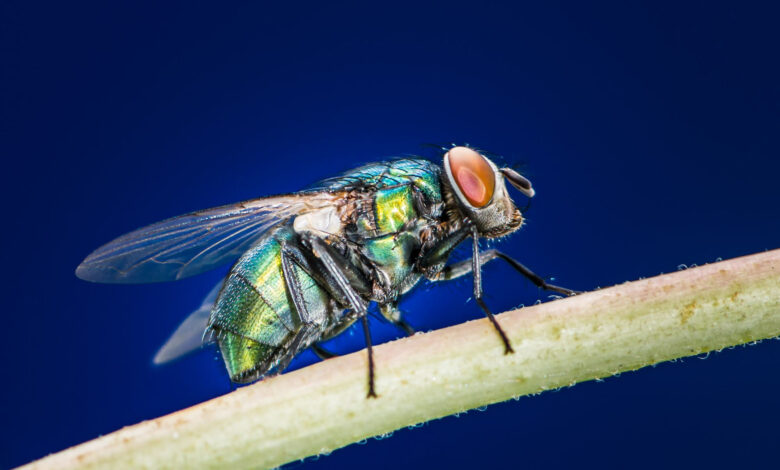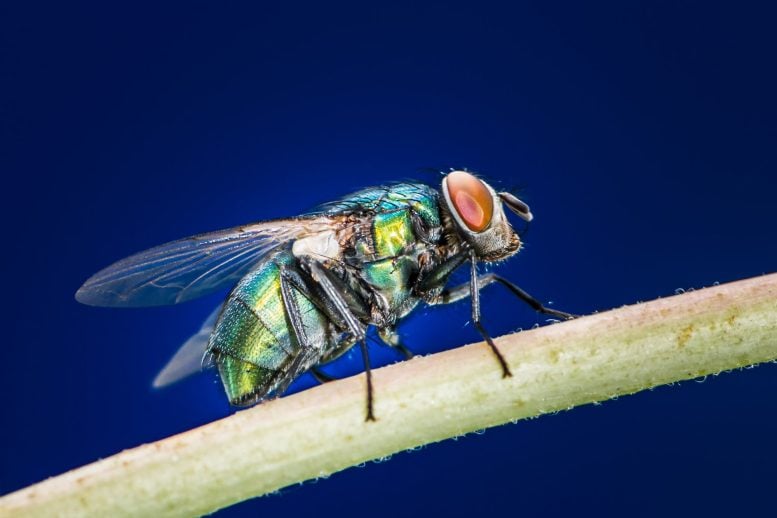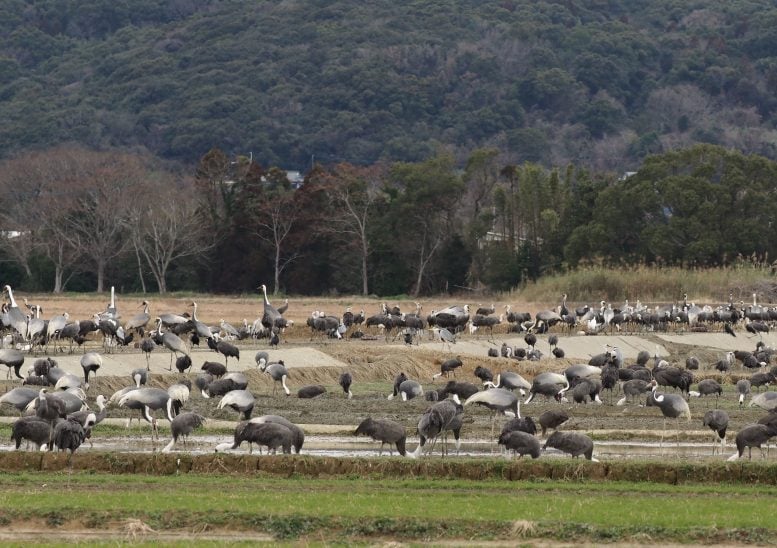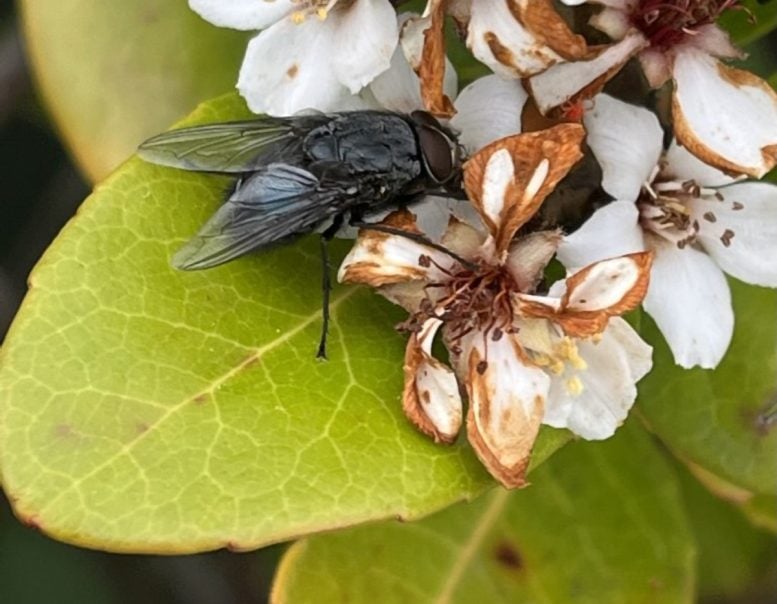Researchers Find Blowflies Carrying Bird Flu in Japan


Researchers at Kyushu University discovered that blowflies in southern Japan carry the bird flu virus, potentially introducing a new route of transmission. Their findings, which highlight the significant implications for poultry farming and public health, suggest that controlling these insects could be crucial in preventing further outbreaks.
A recent study conducted in a wild bird colony in southern Japan indicates that blowflies could be a possible vector for the transmission of bird flu.
Researchers at Kyushu University have found that blowflies, which are highly attracted to decaying flesh and feces, are carriers of the bird flu virus in southern Japan. Their study, published in Scientific Reports, suggests a potential new transmission route for bird flu and underscores the importance of developing new strategies to prevent and control the disease in poultry farms.
Since 2020, bird flu has been spreading rapidly around the globe, leading to the death of millions of wild birds and the culling of more than half a billion farmed birds worldwide. In Japan, where a single case of infection on a poultry farm mandates the culling of the entire stock, the 2022-2023 winter season saw a record-high of 326 outbreaks of bird flu, resulting in the sacrifice of 17.7 million birds. Some strains of bird flu have also jumped to mammals, including cows, goats, dogs, and cats, and since March, an uptick of cases in poultry and dairy workers, with a high fatality rate, has raised significant concern.

In winter, thousands of cranes migrate to Izumi city in Southern Japan. During winter 2022-2023, 1600 cranes out of colony of 10000 cranes died from bird flu. Credit: Ryosuke Fujita, Kyushu University
“Bird flu has been causing substantial damage to wildlife and the poultry industry, and also holds great risk for humans who work closely with livestock. It’s therefore vital to understand how the virus spreads and its potential routes of transmission to control and prevent outbreaks,” explains first author Associate Professor Ryosuke Fujita of Kyushu University’s Faculty of Agriculture.
In this research, the scientists studied a wild crane colony in Izumi city, Kagoshima Prefecture, in southern Japan. In winter, the prime season for bird flu, thousands of cranes migrate to this area, with their dense numbers making them vulnerable to infection. During winter 2022-2023, 1600 cranes out of a colony of 10000 cranes died from bird flu.
“We were notified about the cranes being infected and we had to act quickly,” says Fujita.
Blowfly Role in Virus Transmission
Along with his colleagues, he set traps at different locations around Izumi city to collect blowflies. “We were particularly interested in one species of blowfly, Calliphora nigribarbis, as unlike other fly species, they are active in winter, coinciding with the peak season of bird flu. This, along with their attraction to the flesh and feces of animals, makes them a prime suspect for spreading the virus,” adds Fujita.
The researchers collected 648 blowflies and discovered that 14 blowflies were carrying the bird flu virus. The majority of virus-positive blowflies were collected from the sample site closest to the crane colony. “While 14 blowflies may seem like a low number, this represents a prevalence in blowflies of 2.2%, which is a huge percentage compared to other diseases spread by insects,” explains Fujita. The research team also used genetic testing to confirm that the blowflies were carrying the same virus strain that has been infecting the crane colony.

Blowflies, a family of flies strongly attracted to decaying flesh and feces, are carrying the bird flu virus in southern Japan, highlighting a potential new route of bird flu transmission. Image captured from Kyushu University’s Biodiversity Conservation Zone. Credit: Ryosuke Fujita, Kyushu University
Unlike birds and mammals which the virus infects and replicates inside, blowflies instead ingest the virus from infected dead birds or their waste, with the virus maintaining infectivity for up to two days. Blowflies are capable of flying at least 2 km per day, so the researchers estimate that is it feasible for them to reach nearby poultry farms or other wild bird populations within a 4 km range. The researchers believe that as the blowfly moves from place to place, it could contaminate surfaces, food sources, and water sources, with healthy birds becoming infected through direct contact with these contaminated sources, or by ingesting adult or larval blowflies.
In Japan, where farmers often use closed farming systems instead of open spaces to control infections and maximize production, countermeasures aimed at eliminating blowflies could be implemented fairly easily, helping to protect farmers from severe financial damage.
“By keeping areas clean and using fly control methods, such as fine nets or insecticides, we can reduce the risk of virus spread to indoor poultry farms. However, in outdoor farms in other countries, and in wild bird populations, controlling blowflies may be logistically impossible,” says Fujita.
Having identified that blowflies carry the virus, Fujita and his colleagues are now collaborating with the government to capture blowflies in quarantined sites around infected poultry farms, hoping to find definitive evidence that blowflies are causing these outbreaks. Fujita and his colleagues are also developing new tools that use artificial intelligence to assess and predict the potential risks of vector insects. “By using advanced technologies alongside on-the-ground research, we can better understand and control the spread of bird flu and other insect-borne diseases, ultimately safeguarding both animal and human health,” concludes Fujita.
Reference: “Blowflies are potential vector for avian influenza virus at enzootic area in Japan” by Ryosuke Fujita, Takuji Tachi, Masato Hino, Kosuke Nagata, Masahiro Saiki, Mizue Inumaru, Yukiko Higa, Kentaro Itokawa, Nozomi Uemura, Ryo Matsumura, Izumi Kai, Kyoko Sawabe, Mutsuo Kobayashi, Haruhiko Isawa, Takahiro Kusakabe, Kazunori Matsuo and Shinji Kasai, 4 May 2024, Scientific Reports.
DOI: 10.1038/s41598-024-61026-1
The study was funded by the Japan Society for the Promotion of Science.



